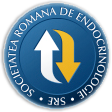
- Login
- Register
- Home/Current Issue
- About the journal
- Editorial board
- Online submission
- Instructions for authors
- Subscriptions
- Foundation Acta Endocrinologica
- Archive
- Contact
 Romanian Academy
Romanian Academy
 The Publishing House of the Romanian Academy
The Publishing House of the Romanian Academy

ACTA ENDOCRINOLOGICA (BUC)
The International Journal of Romanian Society of Endocrinology / Registered in 1938in Web of Science Master Journal List
Acta Endocrinologica(Bucharest) is live in PubMed Central
Journal Impact Factor - click here.

-
General Endocrinology
Usturali Keskin E, Tastekin E, Can N, Mut AN, Celik M, Yilmaz Bulbul B, Oz Puyan F, Ozyilmaz F, Guldiken S, Ayturk S, Sezer A, Ustun F
Survivin Positivity and Prognostic Factors in Papillary Thyroid CarcinomasActa Endo (Buc) 2021 17(4): 455-461 doi: 10.4183/aeb.2021.455
AbstractContext. Papillary thyroid carcinoma(PTC)s are the indolent progressive tumours. Survivin is a unique bifunctional protein with cell cycle regulation and apoptosis inhibition. The expression of this protein has been shown to be increased in thyroid tumours correlated with aggressive behavior from well differentiated to anaplastic. Objective. In this study, we aimed to investigate the relationship between immunohistochemically survivin expression and tumour-associated prognostic factors in papillary thyroid carcinomas. Design. In patients with thyroidectomy, we compared the clinicopathological findings and immunohistochemical positivity for survivin. Subjects and Methods. In 109 patients, sex, age, tumour size, histological tumour variant, tumour focality, tumour border pattern, tumour peripheral/intratumoural lymphocytic and stromal response, intraglandular spread, extrathyroideal spread, lymph node metastases, lymphocytic tiroiditis and relationships of these findings with survivin positivity were investigated. Results. When we indicated the tumour size and compared it with survivin expression, tumour size correlates with, survivin expression (p = 0.016). Survivin expression was correlated statistically significant with lymphovascular invasion, without stromal response and with intraglandular extension respectively (p<0.001, p = 0.043, p<0.001). No significant correlation was found between other clinicopathological parameters and survival. Conclusion. Few studies have investigated the relationship of survivin expression with prognosis in thyroid papillary carcinomas and showed that survivin was a poor prognostic marker. If its expression is detected in preoperative cytology smears, it may affects the surgical treatment strategy. When it is detected in the tissue, postoperative radioactive iodine treatment plan may be modified and the need for more aggressive follow-up may be considered. -
Endocrine Care
Batman A, Canat MM, Saygili ES, Besler E, Yildiz D, Yener Ozturk F, Altuntas Y
Risk Factors for Acute Kidney Injury Associated with Severe HypothyroidismActa Endo (Buc) 2023 19(4): 456-462 doi: 10.4183/aeb.2023.456
AbstractObjective. This study aims to investigate the factors affecting development of acute kidney injury (AKI) in patients with severe hypothyroidism. Methods. This retrospective observational study involved patients with primary hypothyroidism and thyroid stimulating hormone (TSH) levels of more than 50 mIU/L at their review in the endocrinology outpatient clinic, between January 2015 and April 2021. Factors affecting the development of AKI were examined by logistic regression analysis. Results. A total of 100 patients, 20 (11 male (M), 9 female (F)) in the AKI (case) group and 80 (23 M, 57 F) patients in control group, were included in our study. The median age of the case group (56 years, interquartile range (IQR) 44.3–68.5) was significantly higher than the control group (49 years, IQR 32.3–60; p = 0.027), and the ratio of males to females was significantly higher in the case group (p = 0.001). Multivariate logistic regression analyses showed that hypothyroidism diagnosed after the age of 60 years (odds ratio (OR) 59.674, 95% confidence intervals (CI) 5.955–598.031; p = 0.001), free triiodothyronine (FT3) < 1.3 pg/mL (OR 17.151, 95% CI 2.491–118.089; p = 0.004) and creatine kinase (CK) > 1000 U/L (OR 1.522, 95% CI 1.602– 82.848; p = 0.015) were predictors for the development of AKI in patients with severe hypothyroidism. Conclusion. We recommend close follow-up and monitoring of patients with AKI caused by severe hypothyroidism if patients who are diagnosed at age > 60 years, CK > 1000 U/L or FT3 < 1.3 pg/mL. -
General Endocrinology
Sözen MA, Ozcan MU, Cildir M, Dogru IH, Aygok AG, Balkan KU
Association of the Human PPARY2 PRO12ALA Polymorphism with Obesity in a Population from TurkeyActa Endo (Buc) 2018 14(4): 459-465 doi: 10.4183/aeb.2018.459
AbstractBackground. There have been a number of reports on the relationship between the PPARγ2 Pro12Ala genotype and the development of obesity. Objective. A case-control survey was designed to investigate the potential association between a Pro12Ala polymorphism in the PPARγ2 gene and obesity and/or obesity-related phenotypes in a population from Turkey. Materials and methods. The polymerase chain reaction and restriction enzyme digestion were used to genotype the Pro12Ala polymorphism of the PPARγ2 gene in 149 unrelated obese and 105 non-obese control subjects from Turkey. The data were analyzed statistically. Results. We found that the overall minor allele frequency was 0.12 in cases and 0.095 in controls. In terms of genotype distribution and allele frequencies among the cases versus controls in the population studied, only the genderstratified analysis revealed a significantly higher frequency of Pro/Ala genotype within males. The polymorphism was associated with significantly higher weight, height, waist circumference, central adiposity (waist-to-hip ratio, WHR), lean body weight as well as dry body weight, but not overall adiposity (total body fat percentage, TBF) in cases carrying Ala allele (Pro/Ala or Ala/Ala). However, in the subjects carrying Ala allele of the control group, WHR values were found significantly lower. Conclusion. Our results showed that the Pro12Ala polymorphism in the PPARγ2 gene is associated with obesity in the studied adult population from Turkey. These data suggest that the Pro12Ala polymorphism in PPARγ2 may be a potential genetic risk factor for central obesity. -
Endocrine Care
Ozcelik S, Bas S, Ozcelik M, Sariaydin M, Celik M, Gozu H
Efficacy of Insulin, Heparin and Fenofibrate Combination Treatment in Severe Hypertriglyceridemia: Double Center ExperienceActa Endo (Buc) 2019 15(4): 460-465 doi: 10.4183/aeb.2019.460
AbstractContext. Severe hypertriglyceridemia (SH), which calls for a triglyceride (TG) level above 1000 mg/dL, remains an important health issue. While some data exist to offer combination of heparin, insulin and fenofibrate as a reasonable treatment option, safety and benefits of this therapy have not been accurately weighted, largely due to the limited sample size of the relevant studies. Aim. Assess the efficacy and safety of the heparin, insulin and fenofibrate combination in the treatment of patients with SH. Patients - Methods. Patients aged ≥18 years with TG level above 1000 mg/dL and adequate organ function were included. Triglyceride levels were measured immediately before the treatment and on the 3rd and 6th days of the treatment. Treatment dosage, duration, response and side effects were assessed. Patients with hypertriglyceridemia presenting with acute pancreatitis were treated additionally with lipid apheresis. Results. A total of 42 patients were included. Of these, 85.8% came to medical attention with some kind of secondary hypertriglyceridemia causes. The baseline median TG value of the cases was 2141.0 mg/ dL (1026-12250). There were 6 patients (14.3%) with acute pancreatitis at presentation. In patients without pancreatitis, with administration of insulin infusion, unfractionated heparin infusion and fenofibrate capsule, median TG values decreased to 921 mg/ dL (190-6400) on the 3rd day and to 437 mg/ dL (112-1950) on the 6th day of the treatment (p<0.0001, Friedman test). Potential toxicities related to insulin, heparin and fenofibrate combination treatment including hypoglycemia, hemorrhage, rise in creatine kinase levels, hepato - and nephrotoxicity were not observed. Conclusion. In this trial involving patients with SH, our data suggest that insulin, heparin and fenofibrate combination therapy was safe and effective. -
Endocrine Care
Guzel G, Saridemir Unal D, Ozen A, Sacin YE, Yilmaz N, Boz A, Arici C
Could the Rate of Decrease in Intraoperative Parathyroid Hormone Level Be a Determinant of Surgical Technique in Tertiary Hyperparathyroidism?Acta Endo (Buc) 2024 20(4): 471-476 doi: 10.4183/aeb.2024.471
AbstractContext. Intraoperative parathyroid hormone (IO PTH) monitoring has determinative role in surgery for tertiary hyperparathyroidism (tHPT). Objective. We tried to find out whether the extent of surgery to be performed can be dedicated via IO PTH monitoring in tHPT. Design. Renal transplantation (RTX) recipients who had been operated and followed up because of tHPT between 9/2014 and 5/2021 at our institution were retrospectively analyzed. Subjects and Methods. We analyzed the preoperative and postoperative data of 41 patients with tHPT. Results. Considering IO PTH monitoring; 70% and more decrease of the hormone level leaded us favorable results (89% surgical success) regardless of the PTX method (p<0.05). We obtained the same surgical success rate (75%) in patients in whom monitoring was done and was not done. We observed high success ratios (100%) in the latter group via subtotal PTX and total PTX plus auto transplantation (AT) (p<0.05). Conclusions. In surgery for tHPT, IO PTH monitoring should be maintained. When we observe 70% or more decline in the hormone level, we can decide to finish the operation regardless of the surgical technique. If hormone level decrease is below 70%, we have to continue exploration. -
Endocrine Care
Ozler S, Oztas E, Guler BG, Alci M, Caglar AT, Danisman N
Are the Factors Affecting Adverse Pregnancy Outcomes Different in Obese Gestational Diabetes Pregnant Women Receiving Diet or Insulin Treatment?Acta Endo (Buc) 2019 15(4): 472-481 doi: 10.4183/aeb.2019.472
AbstractContext. We aimed to examine the factors affecting adverse gestational outcome in gestational diabetes (GDM) patients, who were grouped as obese and normal- weight, having only-diet, or insulin treatments. Subjects and Methods. The study included 373 patients, treated with diet or insulin. These patients were sub-grouped as obese and non-obese, and examined retrospectively. The variables affecting adverse gestational outcome in obese GDM patients having dietary and/ or insulin treatments were detected with multiple regression analysis. Results. The weight gained during pregnancy in the GDM group having insulin treatment was more than the one in only-diet treated GDM group (p=0.004). Pre-pregnancy body mass index, the weight gained during pregnancy, hemoglobin A1C levels in the second and third trimesters, caesarian rates were higher in the insulin-treated obese patients than in the other groups (p<0.001). The odds ratio for fasting blood glucose level in insulin-treated obese GDM group was 1.081 (95% CI =1.004 - 1.163) (p=0.039); and it was 0.982 (95% CI =0.924 - 1.002) (p=0.048) for the weight gained during pregnancy, in only-diet treated obese GDM patients. Conclusion. The control of weight gained during pregnancy, and of fasting blood glucose levels in obese patients having GDM, is important to decrease adverse gestational outcome. -
Endocrine Care
Ozyalcin B, Sanlier N
Evaluation of Disease Acceptance, Depression, and Quality of Life in People with Type 2 Diabetes MellitusActa Endo (Buc) 2022 18(4): 474-479 doi: 10.4183/aeb.2022.474
AbstractContext. Diabetes is a serious public health problem that is increasing worldwide. Objectives. The aim of this study is to evaluate acceptance of the illness, emotional distress, depression and quality of life in individuals with type 2 diabetes mellitus. Subjects and Methods. This study was conducted in 145 individuals with type 2 diabetes mellitus, 73 males (50.3%) and 72 females (49.7%), ranging in age from 20 to 65 years old. Research data were collected using the face-to-face interview technique by the researchers. The Acceptance of Illness Scale for the determination of individuals’ acceptance of the illness, Problem Areas in Diabetes Scale for emotional distress, Beck Depression Inventory for depression and Short Form-36 scales for quality of life was used. Results. The mean score of individuals’ Acceptance of Illness Scale was 30.2±5.62. Compared to women, men had lower emotional distress, depression levels (p<0.05), higher physical, mental quality of life (p<0.001). Correlations among acceptance of illness, emotional distress, depression and quality of life were found to be significant (p<0.05). Also, models of multiple linear regression analysis were statistically significant (p=0.000). Conclusions. The main goal in the treatment of diabetes should be to eliminate complaints in patients, to reduce, prevent or delay the development of complications, to increase the quality of life, to ensure that the individual has a physically, emotionally, spiritually and mentally regular life in addition to metabolic control. For this reason, it is beneficial to carry out the treatment with a multidisciplinary approach in type 2 diabetes mellitus. -
Endocrine Care
Kaya C, Bozkurt E, Turkyilmaz Mut D, Mihmanli M, Uludag M
Which Factors are Associated With Malignancy in Thyroid Nodules Classified as Bethesda Category 3 (Aus/Flus) and how Do They Influence the Patient’s Management?Acta Endo (Buc) 2019 15(4): 491-496 doi: 10.4183/aeb.2019.491
AbstractBackground. Thyroid nodules are a common pathology worldwide. Fine needle aspiration biopsy (FNAB) is an important diagnostic method for the investigation of malignancy in thyroid nodules. However, according to the Bethesda System used to classify the results, patients with atypia of undetermined significance/follicular lesion of undetermined significance (AUS / FLUS) may not be classified as benign or malignant. Therefore, it may be necessary to determine some clinical risk factors to apply the best treatment in these patients. Aim. To determine the factors that increase the risk of malignancy in this patient group. Methods. A retrospective study including 138 patients with an FNAB categorized as AUS/FLUS and operated between June 2015–September 2018. Demographical, Laboratory (TSH) and Ultrasound variables (number, size and characteristics of nodules) of the patients were compared among postoperative histopathological results. Results. Hypo-echoic structure, microcalcification and irregular margin of the nodules were detected to be associated with malignancy in patients with FNAB results of AUS/FLUS (p <0.001). Conclusion. We suggest that surgical treatment should be considered if the patients have nodules with the hypo-echoic structure, microcalcification and irregular margin with an FNAB histopathological result of AUS / FLUS. -
Editorial
Kalyon S, Ozkan Gumeskaya P, Ozsoy N, Pala AS, Basmakci A, Ozcan M, Arman Y, Tukek T
The Prevalence of Polyneuropathy in the Pre-Diabetes PeriodActa Endo (Buc) 2023 19(4): 497-500 doi: 10.4183/aeb.2023.497
AbstractObjective. This study aims to determine the prevalence of neuropathy in the prediabetic period. Design, Subjects and Method. Informed consent was attained from the patients who volunteered to participate in the study after ethics committee approval was obtained. Patients under the age of 18, having vitamin B12 or folic acid deficiency, history of collagen tissue-rheumatological disease, chronic kidney failure, cirrhosis, ethylism, thyroid disease, autoimmune disease, malignancy, tuberculosis, type 1 or 2 diabetes mellitus and pregnant women were excluded from the study. Patients diagnosed with prediabetes were evaluated by the DN4 neuropathy complaint questionnaire. Neuropathy was diagnosed in patients having a score of four or more. For the statistical analyses Student t-test, Pearson chi-square test, and Fisher's exact test were performed using the NCSS program. Results. A total of 224 volunteers, 167 women and 57 men, were included in the study. The mean age of the participants was 51 and the mean level of hemoglobin A1C was 5.9. Neuropathy was detected in 45% of the cases. Especially in women, there was a significant increase in the frequency of neuropathy compared to men. The most common complaints found in our study were burning sensation and numbness in the extremities. Conclusions. Similar to diabetic patients, prediabetic patients also have a high rate of neuropathy. For the early diagnosis of neuropathy and to be treated promptly, screening tests such as DN4 should be performed for all prediabetic patients. According to the test results, advanced examinations such as EMG or biopsy should be performed earlier. -
Case Report
Oral H, Guven DC, Ates Ozdemi D, Usubutun A, Gonc N, Arik Z
Proprotein Convertase 1/3 Deficiency with Pelvic Ewing SarcomaActa Endo (Buc) 2022 18(4): 508-511 doi: 10.4183/aeb.2022.508
AbstractProprotein convertase 1/3 (PC 1/3) deficiency is a rare, autosomal recessive disorder caused by mutations in the PCSK1 gene. The disease is characterized by earlyonset chronic diarrhea/malabsorption, followed by severe obesity and hormonal deficiencies such as hypocortisolism, hypothyroidism, diabetes insipidus, hypogonadism, growth deficiency, and diabetes mellitus. Ewing’s sarcoma is a rare tumor, usually of small dimensions of neuroectodermal origin that is difficult to distinguish pathologically from a primitive neuroectodermal tumor. A 22-year-old female patient with PC 1/3 deficiency was admitted to our clinic with recurrent urinary tract infections. Magnetic resonance imaging (MRI) revealed an 11x12 cm pelvic mass displacing the uterus. A core-needle biopsy was performed on the pelvic mass. As a result of the pathological evaluation, ıt was diagnosed with pelvic Ewing’s sarcoma. The patient was started on the VAC-IE chemotherapy protocol. We report a case of pelvic Ewing’s sarcoma in a patient with PC 1/3 deficiency. Further research is needed to assess malignancy risk in metabolic disorders including very rare disorders like PC 1/3 deficiency.